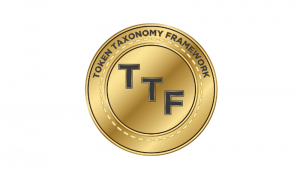

“Whether it’s a ticket, supply chain documents, stocks, property titles, loyalty points, or other as-yet unthought-of blockchain-based products and services, token use should be able to flow across platforms. If we want to take full advantage of what collaborative platforms have to offer, cross-platform transactions have to be able to communicate with one another. Standards are where that starts, and this Framework makes unlocking the untapped potential of tokens on the blockchain possible,” said Marley Gray, chair of the Token Taxonomy Initiative, EEA Board member and principal architect, Microsoft.
“In practical terms, a business user or consortium can select a base type of token and choose from contributed lists of behaviors and properties and assign them to the token, just as you might drag and drop icons on a screen. The framework enables a business person to create a token visually using a design tool without writing any code whatsoever and allows them to tell developers, ‘I want one of these’.”
Mission and underlying requirements
The Token Taxonomy Initiative describes its mission as addressing the need to develop common definitions and scope for a business-grade standard for tokens with interchangeable currency-like properties or unique assets. Why is there a need?
Companies and organisations spend much time trying to determine how best to tokenise products and services. A particular challenge is identifying the shared properties and desired behavior sets needed for implementation on existing blockchain platforms.
Using the TTF:
- Businesspeople should be able to describe a token which addresses a specific business requirements.
- Developers should be able to envision the types of backend requirements needed to standardise a token across different blockchain networks.
The objective is that the resulting token specification is a readable document anyone can:
- understand
- download (whether as documentation or for education).

“The concept of digital tokens has been given to us by the blockchain world, and it appears that in the coming years many different asset classes will be tokenized.
“As such, the Token Taxonomy Initiative’s framework will be key to ensuring that this next wave of financial innovation will start with cross-platform standards in mind,” said John Whelan, TTI member, chairman of the Board of the EEA, and head of Digital Investment Banking at Banco Santander.
The TTI’s framework
Users of the TTF will be able to create a new type of token from a set of re-usable, cross-industry components, including existing token definitions. The result will create a specification which includes all the business ingredients for an implementation.
Supported by taxonomy documentation plus a set of tools (to facilitate token definition workshops that contribute to a shared GitHub repository), the framework should enable businesses to develop:
- a clear definition and scope of any token concept
- use cases
- a common taxonomy and terminology
- specifications neutral about the underlying technology – whether or not the token is hosted on a blockchain platform.
The framework’s template approach and token workshop facilitation tools aim to make exploration and innovation easy. By using rich metadata, the framework:
- facilitates automation-like code generation, verification and certification
- avoids business users having to understand the technology implications
- establishes a reference document valuable to developers.
The GitHub repository
Using the GitHub repository, teams will be able to map business requirements to specific blockchain code or solution implementations. Specifically, the TTF framework provides:
- common sets of concepts and terms that can be used by business, technical, and regulatory participants so they ‘speak the same language’
- a composition framework for defining and building tokens
- a ‘Token Classification Hierarchy’ (TCH) simple to understand
- tooling meta-data (using the TTF syntax to generate visual representations of classifications, and modeling tools to view and create token definitions mapped to the taxonomy); this should enable linking with implementations for specific platforms
- definitions of tokens and use cases across industries.

“Tokens have the potential to disrupt global economics and radically change how commerce will be transacted. The Token Taxonomy Initiative’s framework defines a standard taxonomy making it easier for all to create tokens to serve their respective business use cases,” said EEA Executive Director Ron Resnick.
“While various implementations and taxonomies exist for tokens, the industry is currently lacking a venue for all participants to work together to describe how tokens can eventually interoperate across the multiple and disparate systems that make up a typical enterprise infrastructure. The TTF is now that venue. Plus, the EEA will be launching an EEA Token Working Group that will leverage the TTF framework to extend our global standards work.”
Initial Token Taxonomy Initiative Members
Token Taxonomy Initiative initial members include:
- Accenture
- Adhara
- Banco Santander,
- Blockchain Research Institute
- Clearmatics
- ConsenSys
- Digital Asset
- Envision Blockchain
- Hedera Hashgraph
- IBM
- Intel
- ioBuilders
- Itau
- P. Morgan
- Komgo
- Microsoft
- R3
- Web3 Labs
- and others.
Contributions and one framework for multiple platforms
Vaious vendors are contributing. Real-world token specifications that are reusable, with parts portable across definitions, come from Adhara, ConsenSys, Digital Asset, Enterprise Ethereum Alliance (EEA), IBM, ioBuilders, Microsoft, and R3.
Specific examples include:
- Adhara’s and ioBuilders’ EMoneyToken standard (for production payments and settlement systems)
- Digital Asset will apply TTF standards to assets tokenised with DAML smart contracts
- Microsoft has announced TTF support in Azure Blockchain Tokens (which should simplify the ability to define, create and manage compliant tokens based on TTF standards)

“The Token Taxonomy Framework is an important next step in enabling a technology-independent, open ecosystem of innovation across enterprise use cases. As a founding EEA member, Accenture is proud to be part of this important initiative.
“We look forward to collaborating with the other EEA members and helping organizations to identify opportunities to use this technology to drive real business transformation,” said David Treat, TTI member, a managing director and global blockchain lead at Accenture, and vice-chairman of the Board of the EEA.
Enterprise Times: what does this mean
By using standardized terms and definitions both to understand and build token-based systems, the TTF aims to enable businesses and developers to design the next-generation of token-based business goods and services – without requiring an understanding of industry jargon or coding. It is a brave objective.
What is notable is how many TTI members are also members of other parallel or competitive initiatives – albeit not focused on tokenisation. For Enterprise Times, which has covered many of the alternatives, the overwhelming sensation is of sinking. Has another tech bureaucracy has arrived to handle a subject (tokenisation) that:
- the tech industry wants to be successful
- where the business need has yet to be validated.
That may be the point. The TTI/TTF may be seeking a pathway to bless tokenisation when the marketplace is failing to do so.
























